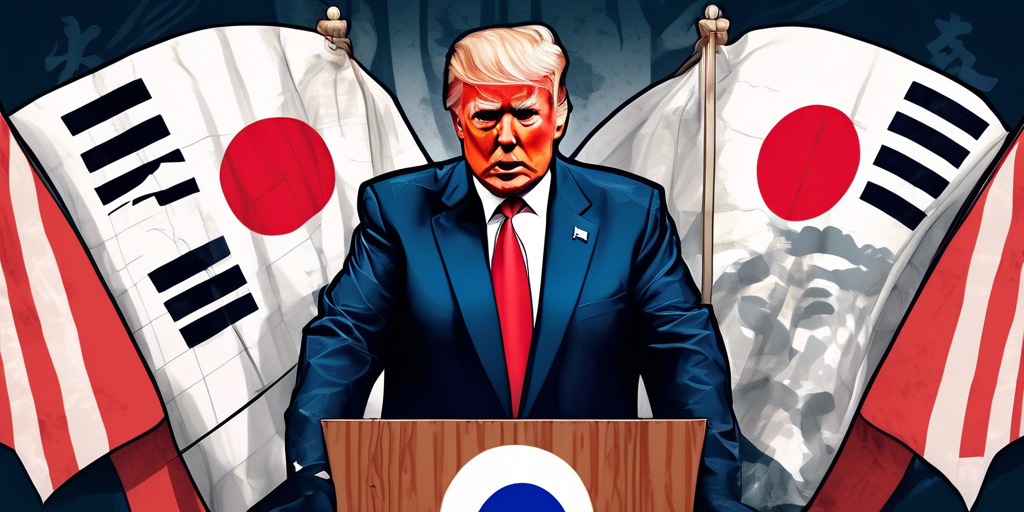The relationship between Japan and South Korea is in the spotlight as the US government announced new economic measures affecting both countries. Japan and South Korea are facing a challenging trade environment after President Trump revealed a 25% tariff on all imports from Japan and South Korea. This decision marks a new phase for Japan and South Korea in their interactions with the United States.
⚡ Trump’s Tariff Announcement Shakes Markets
On Monday, President Trump made headlines by declaring that a blanket 25% tariff will be imposed on imports from Japan and South Korea starting August 1st, 2025. The sudden announcement caused immediate reactions in financial markets, with US stocks experiencing a noticeable slide.
This move is seen as part of the administration’s broader strategy to address trade imbalances and exert pressure on US trading partners. The tariffs cover a wide range of products, raising concerns among businesses and consumers on both sides of the Pacific.
🎯 Diplomatic Visits Cancelled Amid Global Uncertainty
In a related development, US Secretary of State Marco Rubio has postponed his first official visit to Japan and South Korea. The cancellation, reported by Japan’s Nikkei newspaper, is attributed to intensified focus on the escalating Middle East conflict.
The visit was expected to reinforce diplomatic ties and discuss the implications of ongoing trade tensions. Rubio’s decision to shift priorities signals how global events are reshaping US foreign policy, leaving Japan and South Korea to respond to new uncertainties in their relationship with Washington.
🔍 Regional Cooperation Faces New Challenges
Experts note that the recent events are pushing Japan and South Korea to reconsider their strategies and explore greater cooperation. With the US taking a tough stance, both countries are showing signs of increased strategic independence.
China, Japan, and South Korea have already begun discussing closer economic and security cooperation, aiming to reduce their vulnerability to external shocks. This evolving dynamic could lead to new alliances and realignments in East Asia, changing the region’s geopolitical landscape.
📊 Economic Impact and Future Prospects
The 25% tariffs are expected to have significant effects on supply chains, costs, and consumer prices. Japanese and South Korean exporters may need to seek alternative markets, while US businesses relying on imports could face higher expenses.
Analysts warn that prolonged tensions could disrupt long-standing partnerships and create further instability in the global economy. However, some believe that this period of uncertainty could also encourage innovation and deeper regional integration among Asian economies.
The coming months will be crucial as Japan and South Korea navigate these new challenges and seek to maintain growth and stability in a rapidly changing world.
Gostou de saber mais sobre Japan and South Korea? Seus amigos também podem se interessar. Compartilhe com eles agora mesmo!
